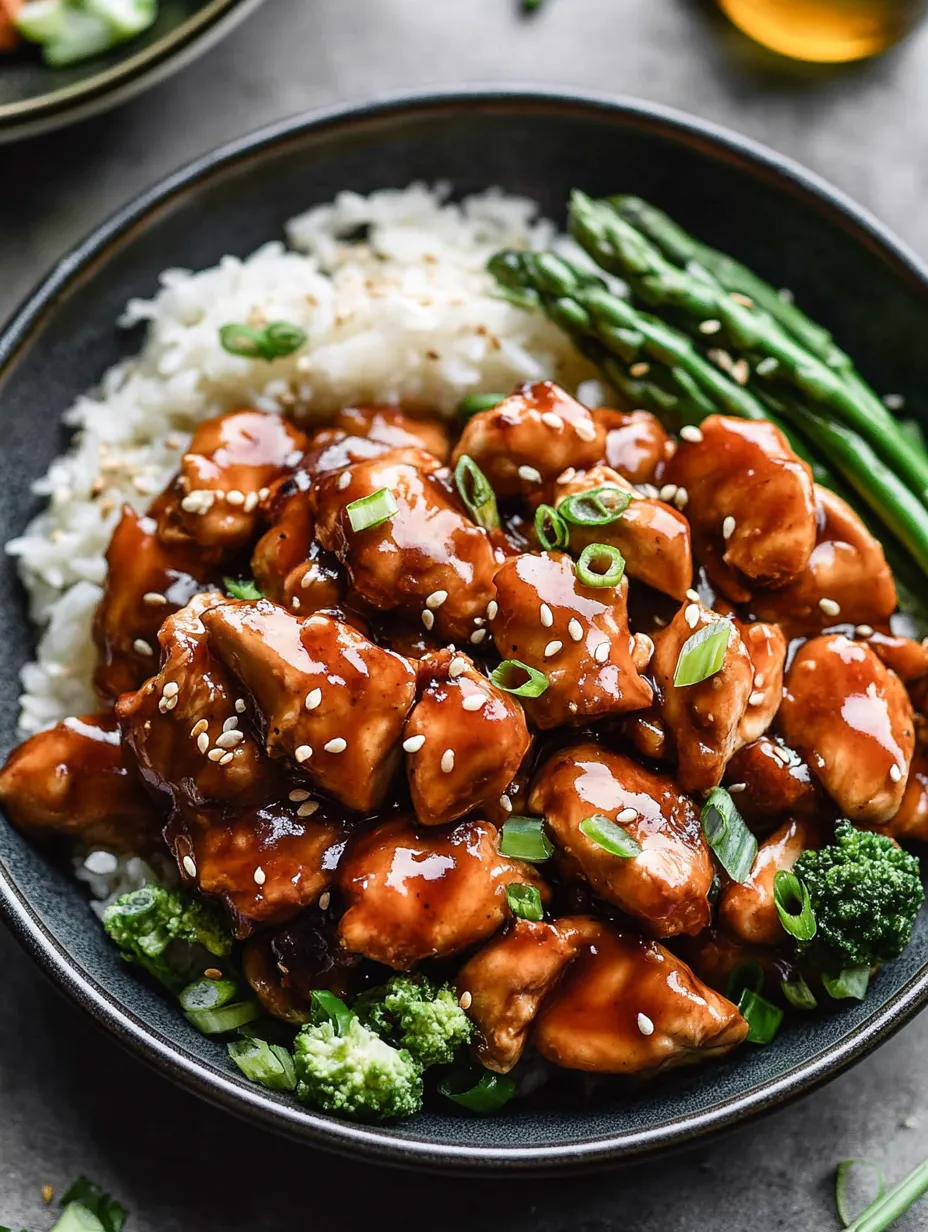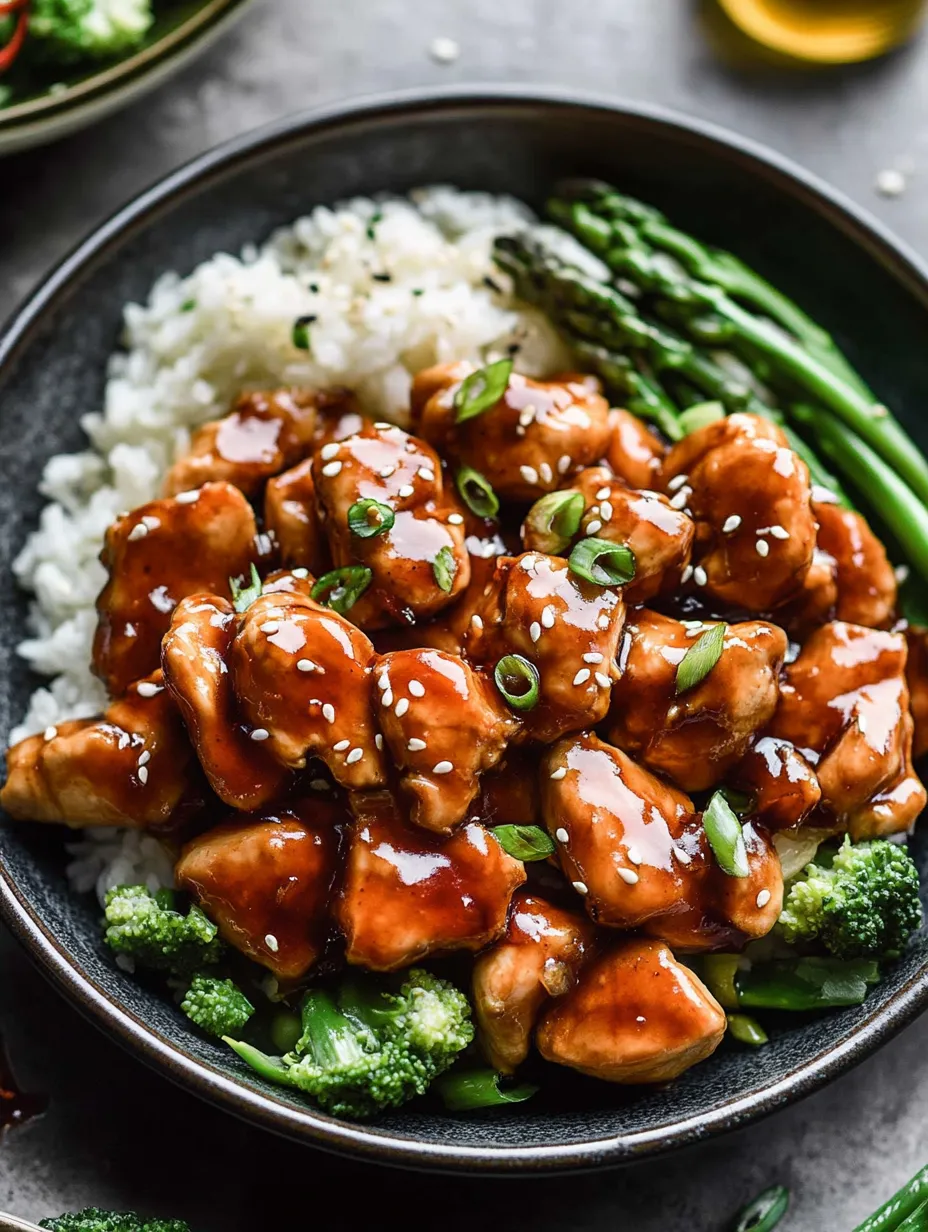 Save Pin
Save Pin
I totally flipped my weeknight dinner game with this 20-minute chicken teriyaki dish. The sweet-tangy balance is spot-on, and that clingy, glossy sauce hugs each chicken chunk beautifully. It's way better than takeout and lands on your table much faster too.
I stumbled on this recipe during a crazy work period when I kept coming home late. Now my family begs for it weekly, and I love that I can switch up the veggies based on what's looking good at the store.
Ingredients List
- Boneless skinless chicken thighs or breasts: Thighs pack more flavor and stay juicier, but breasts are perfect for a lighter option
- Low sodium soy sauce: Creates the savory foundation. The lower salt content lets you control the final taste
- Cornstarch: The secret for that restaurant-style thick, shiny sauce coating
- Honey: Brings natural sweetness and helps create that sticky texture
- Rice vinegar: Adds a gentle zip that balances the sweetness perfectly
- Fresh garlic and ginger: Don't skimp here—fresh versions bring punch that powdered versions can't match
- Red pepper flakes: Provides a subtle heat that lifts all the other flavors
- Green onions: Gives nice pop of color, freshness and mild onion flavor
- Neutral cooking oil: Go with something that can take high heat for proper browning
- Brown rice: Its nutty character pairs beautifully with the teriyaki sauce
Simple Cooking Steps
- Season the Chicken:
- Toss chicken chunks with soy sauce, salt, pepper, and cornstarch. This combo isn't just for flavor—the cornstarch creates a barrier that keeps moisture in and helps everything brown up nicely. Let it rest while prepping your sauce.
- Mix Up the Sauce:
- Combine water, honey, rice vinegar, fresh garlic, ginger, red pepper flakes, remaining soy sauce and cornstarch until smooth. This DIY version blows store-bought options away. Make sure you work out any cornstarch lumps for silky results.
- Cook the Chicken:
- Heat oil in a large non-stick pan or wok until it's shimmering hot. Arrange chicken in a single layer without overcrowding, then leave it alone for 2-3 minutes until golden. This patience builds amazing flavor. Flip and cook another 2-3 minutes until chicken is cooked through with a tasty crust.
- Pour in the Sauce:
- Add your sauce mixture to the cooked chicken and watch it bubble. The transformation happens in front of you as it turns thicker and gets that sticky-shiny look in about 1-2 minutes. Keep everything moving so all chicken pieces get evenly coated.
- Finish and Serve:
- Stir in most of your green onions, saving some for garnish. Serve promptly over warm rice with your favorite steamed veggies for a complete meal. The rich saucy chicken paired with fresh vegetables makes an unbeatable combo.
 Save Pin
Save Pin
I wasted years using powdered ginger before trying fresh in this dish. That first bite with real ginger was incredible. My grandma always insisted proper teriyaki needs fresh ginger root, and she wasn't kidding. That warm, spicy kick simply can't be replaced.
Storage Suggestions
This teriyaki chicken actually tastes even better the next day after the flavors mingle more. Store leftovers in airtight containers in your fridge for up to 4 days. For planned leftovers, portion out chicken with rice and veggies into separate containers for grab-and-go lunches.
The sauce thickens up quite a bit when cold. When reheating, you might want to add a splash of water to bring back its original consistency. Warm it gently in the microwave or in a skillet over medium-low heat just until hot to avoid tough chicken.
For longer storage, pop portions in the freezer for up to 3 months. Let it thaw overnight in your fridge before warming for best quality and flavor.
Custom Variations
What I love about this dish is how adaptable it is. Try swapping honey for brown sugar or maple syrup for different sweetness profiles. For more depth, add a tablespoon of mirin or a few drops of sesame oil to your sauce mixture.
The veggie options are endless. Beyond typical stir-fry mixes, try adding snow peas, bell peppers, baby corn, water chestnuts, or bok choy. If you're cutting carbs, serve over cauliflower rice or just double up on veggies instead of using rice.
For extra texture and visual appeal, scatter toasted sesame seeds or chopped peanuts on top before serving. A drizzle of sriracha adds nice heat for spice lovers.
 Save Pin
Save Pin
Tasty History
Teriyaki comes from Japan, where this cooking method involves grilling or broiling food with a glaze of soy sauce, mirin, and sugar. The name combines "teri" meaning glossy and "yaki" meaning grilled or broiled, describing the shiny finish on the food.
What Americans know today usually features a thickened sauce rather than just a thin glaze. This adaptation became popular in the US during the 1960s and has grown into one of the most beloved Asian-inspired dishes in American home cooking.
Common Questions
- → Can I swap out chicken thighs for breasts?
Absolutely, either option works well. Just adjust your cooking time to keep the meat juicy and flavorful.
- → What should I serve this with?
It tastes amazing over a bed of rice with some steamed vegetables on the side—try broccoli, sliced carrots, or crunchy snow peas for balance.
- → How can I make the sauce thicker?
Add a bit more cornstarch and let it bubble away longer to reach your preferred consistency.
- → Is this dish spicy?
There's a mild kick from red pepper flakes. You can dial it up or down based on your heat preference.
- → What's the best way to reheat this?
Gently warm it in a pan over low heat or use your microwave. If needed, add a tiny bit of water to loosen up thickened sauce.
